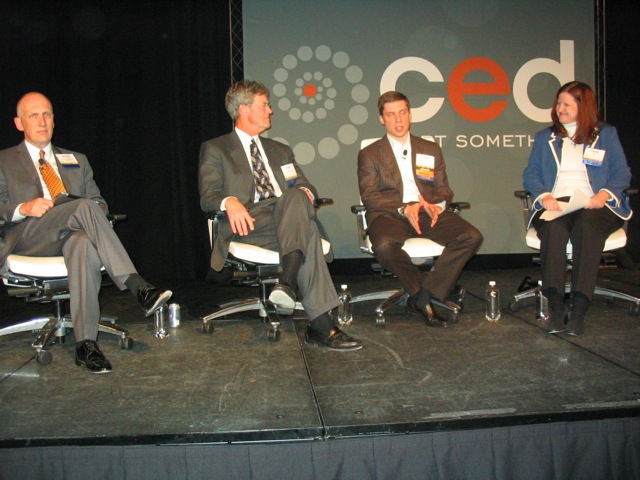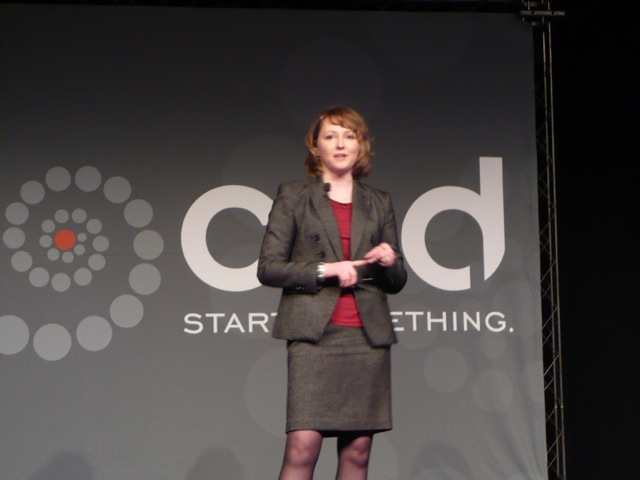
Medtech Companies Front and Center at CED Conference
Some of the most exciting technologies that come out of the life-sciences industry center on medical devices and services that can offer tremendous health benefits and improve lives.
These devices often come from medical technology companies, which make up a significant portion of the life-sciences industry. New and emerging medical technology, or “medtech,” companies were a focal point of this year’s CED Life Science Conference, held last week in Raleigh.
Creativity crucial to solving funding challenges
The conference featured a panel discussion on new business models for medtech companies. The panel included James T. McDeavitt, M.D., chief academic officer of Carolinas Healthcare System, Fred McCoy, president & CEO of NeuroTronik Limited, Justin Klein, M.D., partner at NEA and moderator Cindy Clark, president of ibiliti.
 |
“It is certainly a challenging time for funding,” said Clark. Panelists agreed that challenging economic times have led to creative solutions for companies to secure funding.
One of the new models companies are turning to for funding is crowdfunding. This model allows an individual or company to establish a payment portal, through a crowdfunding site such as Kickstarter or TechMoola, and accept funds to be used for a specific project or idea.
Crowdfunding is a “path for Joe the inventor to get his ideas developed and get some technical expertise,” said McDeavitt. It allows innovative and creative ideas to get off the ground and come to fruition. According to the panel, it also allows companies to upload ideas for products or services and gauge which have the most commercial potential.
Additionally, they explained, companies can collaborate to combine their respective products for unique joint services or products. This type of collaboration, McDeavitt explained, is geared towards structures and devices rather than molecules and science, which may indicate what type of ideas investors are looking to fund going forward.
Panelists also discussed the evolution of the healthcare industry and the role of medtech companies in that evolution. The changing landscape of the healthcare industry is going to drive cost out of the system, according to McDeavitt. He suggested that companies will get leaner and more efficient and the trend of massive national or regional healthcare systems replacing smaller ones is likely to continue.
The result, he said, will be better quality care for the patient. “Areas of innovation and opportunity are going to have more to do with data management and the use of data to improve care and more to do with care delivery,” said McDeavitt, who argued that getting information to patients quickly would drive healthcare in the future.
Companies showcase innovative new products
The conference also featured a company showcase that gave presenters the opportunity to share the vision of their company with conference attendees.
TearScience Chief Commercial Officer Wade Hampton discussed his company’s dry eye treatment, which just received $70 million in funding for a global sales and marketing push.
The company has pioneered devices that provide significant clinical improvement in the treatment of evaporative dry eye. Of the more than 100 million dry eye sufferers worldwide, approximately 65 percent have evaporative dry eye, which is caused by a gland dysfunction in the eyelid and a lipid (oil) deficiency of the eye’s natural tear film.
TearScience’s integrated, in-office system, cleared for U.S. marketing by the Food and Drug Administration in late 2011, enables eye-care professionals to effectively diagnose and treat this root cause of evaporative dry eye.
Hugh Crenshaw, CEO of Physcient Inc., a portfolio company of the North Carolina Biotechnology Center, gave a presentation about his company’s dissector, which has the potential to make surgery safer and more efficient.
The Physcient Blunt Dissector is used to isolate a target tissue buried inside complex body tissue. Unlike scalpels and other traditional dissectors, which Crenshaw said “slice indiscriminately,” the Physcient dissector spares critical tissue while also speeding up the dissection process, which accounts for significant portions of surgery time.
 |
| AAD President and CEP Joy Parr Drach |
Fellow NCBiotech portfolio company Advanced Animal Diagnostics (AAD) was also one of the companies in the showcase. President and CEO Joy Parr Drach was on hand to discuss the company’s diagnostic technology.
AAD, based in Durham, has developed an on-site diagnostic testing machine that will allow dairy farmers to save days in diagnostic testing time and treat diseases quicker and more effectively. The reader delivers “information that counts,” according to Drach, by analyzing a cow’s milk sample through a white blood cell differential test. This type of test can identify whether or not a cow is affected by harmful diseases or infections, such as mastitis.
Mastitis is the most common disease in American dairy cattle and also the most costly. Characterized by a persistent inflammation of the udder tissue, mastitis accounts for nearly $2 billion in annual losses for the U.S. dairy industry and $10 billion globally.
Drach was one of many presenters to discuss the importance of funding and resource support, which help small companies, including those in the showcase, get their products to market.
Drach thanked both the CED and NCBiotech, who she said provided “support critical to the early-stage company.”
